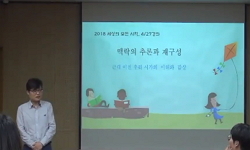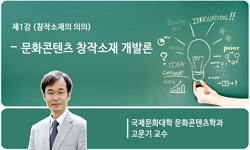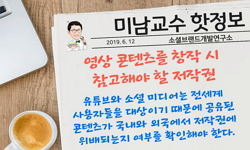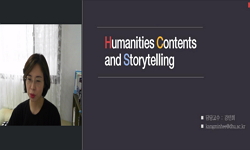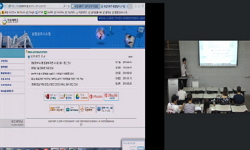This study analyzes the current status of education regarding ‘reception and production of literature’, an achievement standard in the Korean high school literature curriculum. Focusing on SimcheongJeon, I suggest educational methods to attain ‘...
http://chineseinput.net/에서 pinyin(병음)방식으로 중국어를 변환할 수 있습니다.
변환된 중국어를 복사하여 사용하시면 됩니다.
- 中文 을 입력하시려면 zhongwen을 입력하시고 space를누르시면됩니다.
- 北京 을 입력하시려면 beijing을 입력하시고 space를 누르시면 됩니다.
https://www.riss.kr/link?id=T15338747
- 저자
-
발행사항
서울 : 숙명여자대학교 교육대학원, 2019
-
학위논문사항
학위논문(석사)-- 숙명여자대학교 교육대학원 : 국어교육전공 2019. 8
-
발행연도
2019
-
작성언어
한국어
- 주제어
-
발행국(도시)
서울
-
형태사항
; 26 cm
-
일반주기명
지도교수: 김선현
-
UCI식별코드
I804:11043-000000068503
- 소장기관
-
0
상세조회 -
0
다운로드
부가정보
다국어 초록 (Multilingual Abstract)
This study analyzes the current status of education regarding ‘reception and production of literature’, an achievement standard in the Korean high school literature curriculum. Focusing on SimcheongJeon, I suggest educational methods to attain ‘reception and production of literature’ in high school Korean literature classrooms. This study views the ‘reception’ and ‘production’ of literature not as separate activities, but as connected literary activities that must be handled from an integrated perspective. With this idea in the background, integrated educational methods to attain this academic standard is developed using SimcheongJeon.
To achieve this end, this study surveys the background in which ‘reception and production of literature’ came to be included in the Korean high school literature curriculum, as well as the standard’s history. In doing so, I touch on the changing aspects and features of the standard in different time periods, with a focus on the fact that the Seventh National Curriculum solidified the framework for ‘reception and production of literature’ and that revisions were made to the standard since then to adapt to the flow and demands of the times.
Next, this study investigates the ten types of literature textbooks developed in accordance with the National Curriculum revised in 2015. More specifically, the types of literary works and educational focus regarding the ‘reception and production of literature’ standard were comparatively analyzed. Through this effort, this study suggests balancing traditional and contemporary literature featured in textbooks, developing instruction methods that can comprehensively satisfy the achievement standard, and including information about changes in content and form between original literary works and their adaptations when teaching classes on ‘areas adjoining literature’ and ‘literature and media’.
Based on those analyses, this study proposed teaching and learning methods regarding ‘reception and production of literature’ with a focus on SimcheongJeon, which is a work of literature that has been used in the high school Korean curriculum for a long time and also is being adapted into different genres.
Before doing so, a diachronic study was conducted on how SimcheongJeon was taught in the field. I surveyed how the story was featured in literature textbooks from the First to Seventh National Curriculums, in addition to looking at the status of the story in the Revised National Curriculums from 2007 to 2015 by analyzing its place in literature textbooks and the learning activities related to it. While SimcheongJeon, along with other pansori novels, recurred in high school literature textbooks during the First to Seventh National Curriculums, but the frequency of its appearance is declining as the years pass after that period.
This study develops four learning and teaching methods based on this information, which are as follows:
The first method leads the learner to read and experience Simcheong-Ga and SimcheongJeon together to allow them to appreciate the work’s musical and theatrical elements as well as its literary elements. Here, the learner is led to choose a scene from SimcheongJeon that left an impression on them, and then listens to the pansori performance of that part from Simcheong-Ga. Later, a class about six pansori rhythms including jinyang, jungmeori, and jungjungmeori, is provided to help the learner understand that the content and the form of pansori performances are organically knit together.
In the second method, the learner is taught to read SimcheongJeon from socio-cultural and inter-textual contexts. Here, the instructor produces historical materials that provide an overview of the social and cultural state of the late Joseon Era, during which SimcheongJeon was distributed. By doing so, learners are allowed to survey the social circumstances of the time and learn to interpret the story under a socio-cultural context. Also, this study proposes reading SimcheongJeon with ChunhyangJeon under an inter-textual context.
In the third teaching and learning method, the learner is led to produce a different version of SimcheongJeon. The focus of this activity is to create a secondary work based on appreciation of the original work, and as such it can serve as a standard of literature education that connects the reception and production of literature. In creating a different version of the story, the learner will be able to view it from either a sympathetic or critical perspective, in addition to engaging in training to interpret and produce works of literature in a multifaceted manner.
The last method is to have the learner develop a proposal regarding cultural contents such as exhibitions, movies, web comics, advertisements, or game scenarios based on SimcheongJeon. Through this activity, the learner will be able to discover the story’s potential not only as a classical novel but also as new cultural content, and thereby implement plans to realize that potential.
Through the above discussions, this study suggests teaching and learning methods which fulfill the six academic achievement standards within the area of ‘reception and production of literature’ The expectation is that the currently proposed methods will enable learners to engage in the ‘reception and production of literature’ which is a key element in the Korean high school literature curriculum.
국문 초록 (Abstract)
이 연구에서는 고등학교 문학 영역 ‘문학의 수용과 생산’ 성취기준의 교육 현황을 분석하고, <심청전>을 중심으로 ‘문학의 수용과 생산’ 영역의 교육 방안을 제시하였다. 본 연구는...
이 연구에서는 고등학교 문학 영역 ‘문학의 수용과 생산’ 성취기준의 교육 현황을 분석하고, <심청전>을 중심으로 ‘문학의 수용과 생산’ 영역의 교육 방안을 제시하였다. 본 연구는 ‘문학의 수용과 생산’이 분절된 활동이 아니라 통합적인 관점으로 다루어야 할 연결된 문학 활동이라고 보고 있다. 이러한 전제에서 <심청전>을 중심으로 ‘문학의 수용과 생산’의 통합적인 교육 방안을 고안하고자 하였다.
이를 위해 먼저 ‘문학의 수용과 생산’ 영역이 교육과정에 도입된 배경과 변천사를 살펴보았다. 교육과정 시기별 ‘문학의 수용과 생산’ 영역의 변천 양상과 특징을 알아보았다. ‘문학의 수용과 생산’의 틀이 갖춰진 시기는 제7차 국어과 교육과정인데, 이후 시대적 흐름과 요구를 수용하면서 구체적인 성취기준이 개정되었다는 점에 주목하며 변화 양상을 짚어보았다.
그 다음으로 2015 개정 교육과정 문학 교과서 10종을 살펴보았다. 구체적으로는 ‘문학의 수용과 생산’ 단원의 작품 수록 양상과 교육 내용을 비교하고 분석하였다. 이를 통해 교과서 제재를 수록할 때 고전문학과 현대문학의 비중을 균형 있게 조정해야 한다는 점, ‘문학의 수용과 생산’ 성취기준을 모두 꿰뚫을 수 있는 교육 방안을 마련해야 한다는 점, ‘문학과 인접 분야’, ‘문학과 매체’의 교육 내용에 원작과 재창작된 작품 간의 내용과 형식의 변화상을 포함시켜야 한다는 점을 제시하였다.
이러한 분석을 바탕으로 오랜 기간 고등 국어 교과의 주 제재로 활용되면서 동시에 다른 장르로 재창작되고 있는 <심청전>을 중심으로 한 ‘문학의 수용과 생산’ 영역의 교수·학습 방안을 제시하였다.
이에 앞서, 교육 현장에서 <심청전>이 어떻게 교육되었는지를 통시적으로 고찰하였다. 제1차~7차 국어과 교육과정 시기의 교과서 수록 양상을 알아보았다. 또 2007~2015 개정 교육과정 시기의 교육 현황을 교과서 수록 양상과 학습활동 분석을 통해 살펴보았다. <심청전>은 제1차~7차 교육과정 시기에는 다른 판소리계 소설과 함께 교과서에 반복적으로 수록되었지만, 최신의 교육과정으로 갈수록 교과서 내 수록 빈도가 줄고 있다.
이를 바탕으로 이 연구에서는 네 가지 교수‧학습 방안을 구성하였는데 그 내용은 다음과 같다.
첫째, <심청가>와 <심청전>을 함께 감상하여 작품의 문학적 요소뿐 아니라 음악, 연극적 요소도 함께 감상할 수 있도록 제시하였다. 학습자가 직접 <심청전>의 인상 깊은 장면을 선정하고 그 장면에 해당하는 판소리 대목을 들어보도록 하였다. 이후 진양, 중머리, 중중머리 등 판소리의 여섯 가지 장단을 학습함으로써 판소리는 내용과 형식이 유기적으로 연관되어 있음을 이해할 수 있도록 교육 내용을 구성하였다.
둘째, <심청전>을 사회‧문화적, 상호텍스트적 맥락에서 읽도록 교육 내용을 마련하였다. <심청전>이 유통되었던 조선 후기의 사회 문화상을 살펴볼 수 있는 역사 자료를 제작하여 당시의 사회상을 학습하고 <심청전>을 사회‧문화적 맥락으로 해석할 수 있도록 하였다. 또 이 작품을 다른 판소리계 소설인 <춘향전>과 상호텍스트적 맥락으로 읽는 방안을 제시하였다.
셋째, <심청전>의 이본을 제작하는 교수‧학습 방안을 구성하였다. 이본은 작품의 감상을 통해 제2차 저작물을 생산해내는 활동인 만큼 문학의 수용과 생산을 연계한 문학교육의 표본이 될 수 있다. 학습자들은 이본을 제작하면서 <심청전>을 공감‧비판적 시각에서 바라볼 수 있게 될 것이고 문학작품을 입체적으로 해석하고 생산하는 훈련을 할 수 있을 것이다.
마지막으로, <심청전>으로 전시, 영화, 웹툰, 광고, 게임 시나리오 등 문화콘텐츠를 제작하기 위한 제안서를 작성하는 수업을 고안하였다. 이를 통해 고전소설이 지닌 문화콘텐츠로서의 가능성을 발견하고 실제 적용해 보는 활동을 할 수 있을 것이다.
이러한 논의를 통하여 본 연구는 <심청전> 한 작품으로 ‘문학의 수용과 생산’ 영역의 여섯 가지 성취기준을 모두 학습할 수 있는 교수‧학습 방안을 제시하였으며, 이를 통해 학습자들이 문학 교과의 중핵인 ‘문학의 수용과 생산’ 영역을 더 심도 있게 학습할 수 있게 되기를 기대한다.
목차 (Table of Contents)
- Ⅰ. 서론 = 1
- 1. 연구의 목적 = 1
- 2. 연구의 범위 및 방법 = 3
- 3. 선행 연구 검토 = 4
- Ⅱ. ‘문학의 수용과 생산’ 영역의 교육 현황 = 11
- Ⅰ. 서론 = 1
- 1. 연구의 목적 = 1
- 2. 연구의 범위 및 방법 = 3
- 3. 선행 연구 검토 = 4
- Ⅱ. ‘문학의 수용과 생산’ 영역의 교육 현황 = 11
- 1. 교육과정별 ‘문학의 수용과 생산’ 영역의 도입과 변천 = 11
- 1) ‘문학의 수용과 생산’ 영역의 도입 배경 = 11
- 2) 교육과정별 ‘문학의 수용과 생산’ 영역의 변천 양상과 특징 = 15
- 2. 2015 개정 문학 교과서의 ‘문학의 수용과 생산’ 영역 교육 현황 = 24
- 1) 고등학교 문학 교과서의 작품 수록 양상과 교육 내용 = 24
- 2) 현행 ‘문학의 수용과 생산’ 교육이 나아가야 할 방향 = 49
- Ⅲ. ‘문학의 수용과 생산’ 영역의 교육 방안 : <심청전>을 중심으로 = 52
- 1. <심청전>과 ‘문학의 수용과 생산’ 영역의 관련성 검토 = 52
- 1) <심청전>의 교육과정 시기별 교육 현황 = 52
- 2) <심청전>의 특성과 교육적 가치 = 65
- 2. <심청전>을 중심으로 한 ‘문학의 수용과 생산’ 영역의 교수‧학습 방안 = 73
- 1) <심청가>의 주요 대목 청취와 작품 분석 = 74
- 2) 다양한 맥락에서 <심청전> 감상하기 = 80
- 3) <심청전> 이본 제작하기 = 86
- 4) <심청전> 문화콘텐츠 제안서 만들기 = 92
- Ⅳ. 결론 = 97





